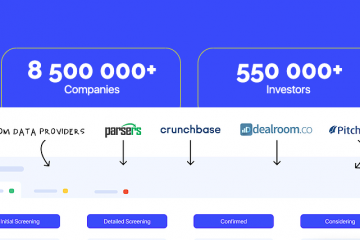Why you need advanced Big Data analytics and how to get it
Let’s consider what advanced analytics and advanced data management are, how they are related to business digitalization, and why Gartner research bureau included these technologies in the TOP 10 of the most promising trends of 2020.
What is advanced Analytics and what does digitalization have to do with it
Advanced analytics and advanced data management are 2 main trends from the 10 most promising areas in the field of Data & Analytics according to the research agency Gartner. It is predicted that these technologies will begin to dominate in 2020, and the demand for them will increase many times over in the next 3-5 years. However, digital transformation is not a goal, but only a means of transferring an enterprise or an entire country to an optimal state using modern IT tools, such as the Internet of Things, Big Data, Machine Learning, and other artificial intelligence methods. From a business point of view, the main benefit of all these technologies is the optimization of current processes and the generation of new opportunities. For example, advanced analytics of data on consumer behavior and user interests, helped banks to detect the need for young clients (from 20 to 35 years old) in asset management and offer appropriate products to this category.
Another illustrative case of the clear benefits of advanced analytics is when it helped a fast-food restaurant chain increase sale of carbonated drinks by 20% by changing their location relative to other bottles. The Big Data system analyzed the sales of the entire range of products and revealed the dependence of demand on the location of goods. The company took this regularity into account when remodeling its premises and received substantial benefits.
Thus, technologies move to the next level of abstraction, allowing not only to solve current problems, but also to set new ones. What is Augmented Analytics? Here is a definition from Gartner: advanced analytics is the use of machine learning and other methods of artificial intelligence to prepare data, analyze it and interpret it, to expand the human capabilities of people to study and analyze data, including within the framework of BI platforms. Enhanced analytics improves the effectiveness of analysts and executives by automating many of the Data Science processes, Machine Learning techniques and software development, data management, and AI model deployment.
How to implement advanced analytics: Big Data, Machine Learning and advanced data management
Advanced analytics automates the search and identification of the most important ideas or changes in the business to optimize decision making. Thanks to automation, this takes less time compared to traditional business intelligence methods. Thus, in the future, Augmented analytics will make forecasting and generating business insights more accessible to a wide range of people (managers, line managers and specialized workers), and not just analysts and specialists in Data Science, as they are now. However, the introduction of such technology will require an increase in the overall level of information literacy and data quality throughout the organization. Therefore, Gartner expects that in 2020, advanced analytics will become the main driver of business intelligence, as well as platforms for data processing and machine learning.
This trend continues in another promising trend – Augmented data management. Like advanced analytics, it involves the use of Machine Learning and other methods of artificial intelligence in the processes of collecting, transmitting, processing, and interpreting Big Data. This is necessary to make corporate data management self-adjusting and self-governing, including improving data quality, managing metadata and core information assets, integrating various information systems and file storage. This democratization is another strategic trend identified by Gartner. Technologically, this initiative is supported by automatic machine learning (AutoML) systems – online services and ready-made libraries to simplify the creation and application of complex algorithms to the maximum. Thanks to simplified user interfaces, they allow you to quickly develop the necessary models, reducing the likelihood of erroneous calculations. Among the most popular AutoML solutions today, it is worth mentioning Amazon SageMaker, Google Cloud AutoML, Microsoft Azure ML, Auto-Keras, RECIPE, TransmogrifAI, Auto-WEKA, H2O AutoML and other frameworks. All these tools facilitate the work of Data Scientist’s, saving time by automatically constructing features, optimizing hyperparameters, finding the best neural network architecture, selecting channels and evaluation metrics, determining errors and performing other ML-procedures. AutoML has also been recognized by Garther as the most promising Machine Learning trend: in the September 2019 report, this technology is at the peak of the Hype cycle.
Of course, machine learning models built using AutoML or developed manually by Data Scientist are closely related to other Big Data technologies: Apache Hadoop, Spark, Kafka, HBase, Hive, and so on. For example, big data for modeling can be stored in hadoop-based enterprise storage (Data Lake) or collected in real time using Kafka. This is why advanced Analytics and augmented data management are implemented through long-used frameworks for distributed processing of large volumes of different-format information. Another promising trend in the field of Data&Analytics, noted by the Agency Garther, is connected with streaming processing of Big Data: continuous data mining (Continuous intelligence). This trend means constant collection of technological and software data from end-user IoT / IIoT devices and cloud computing in online mode. By 2022, more than half of large business systems are expected to include Continuous Intelligence modules to analyze contextual data in real time to optimize management decisions.
This digitalization, based on advanced Analytics and augmented data management, most accurately corresponds to the goals of digital transformation, allowing you to comprehensively optimize the activities of the entire enterprise, and not just automate its individual business processes. However, the design and implementation of such a Big Data advanced Analytics system is quite a complex project that requires careful study, especially at the stage of analyzing the business needs of stakeholders and the company’s capabilities.


